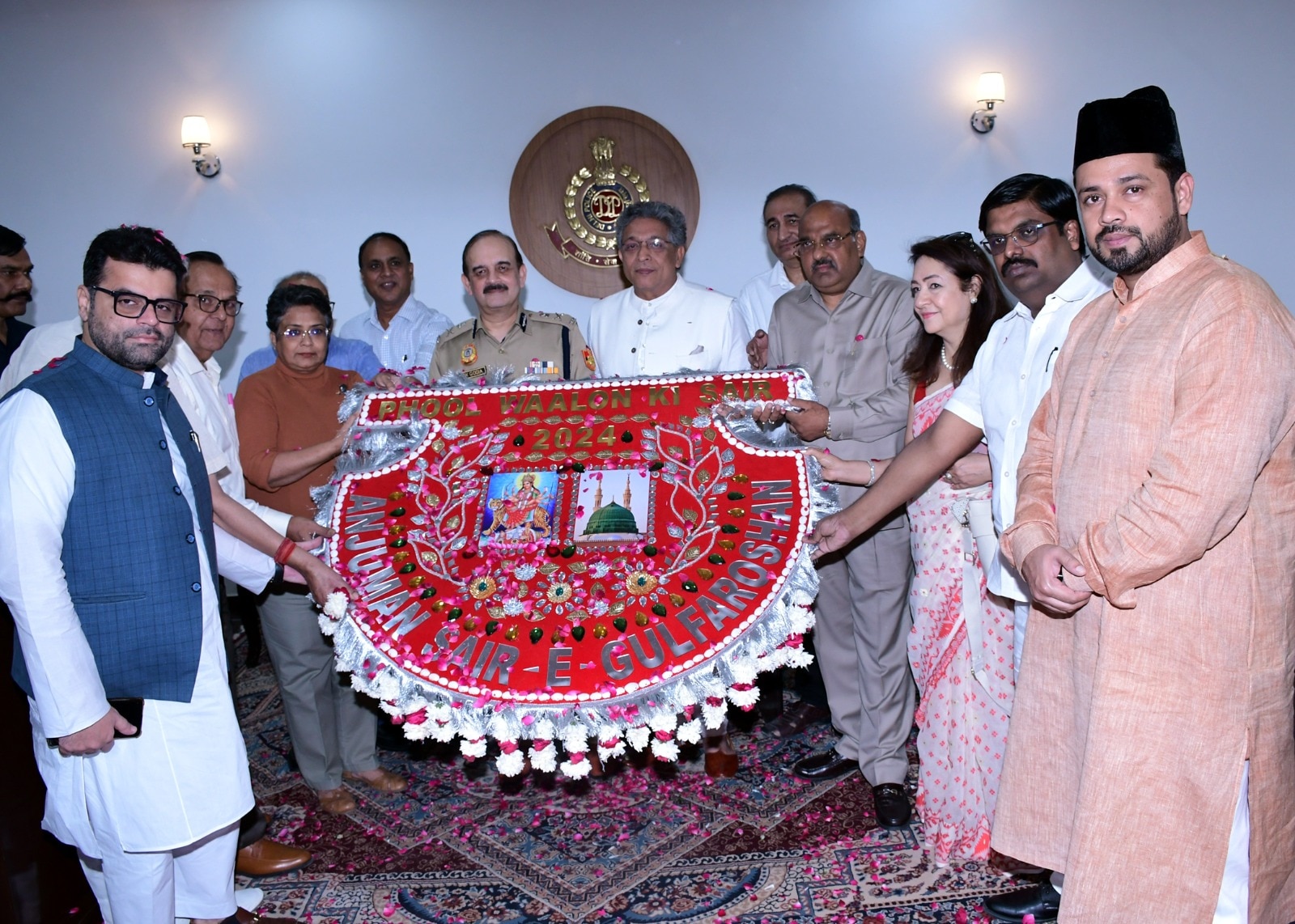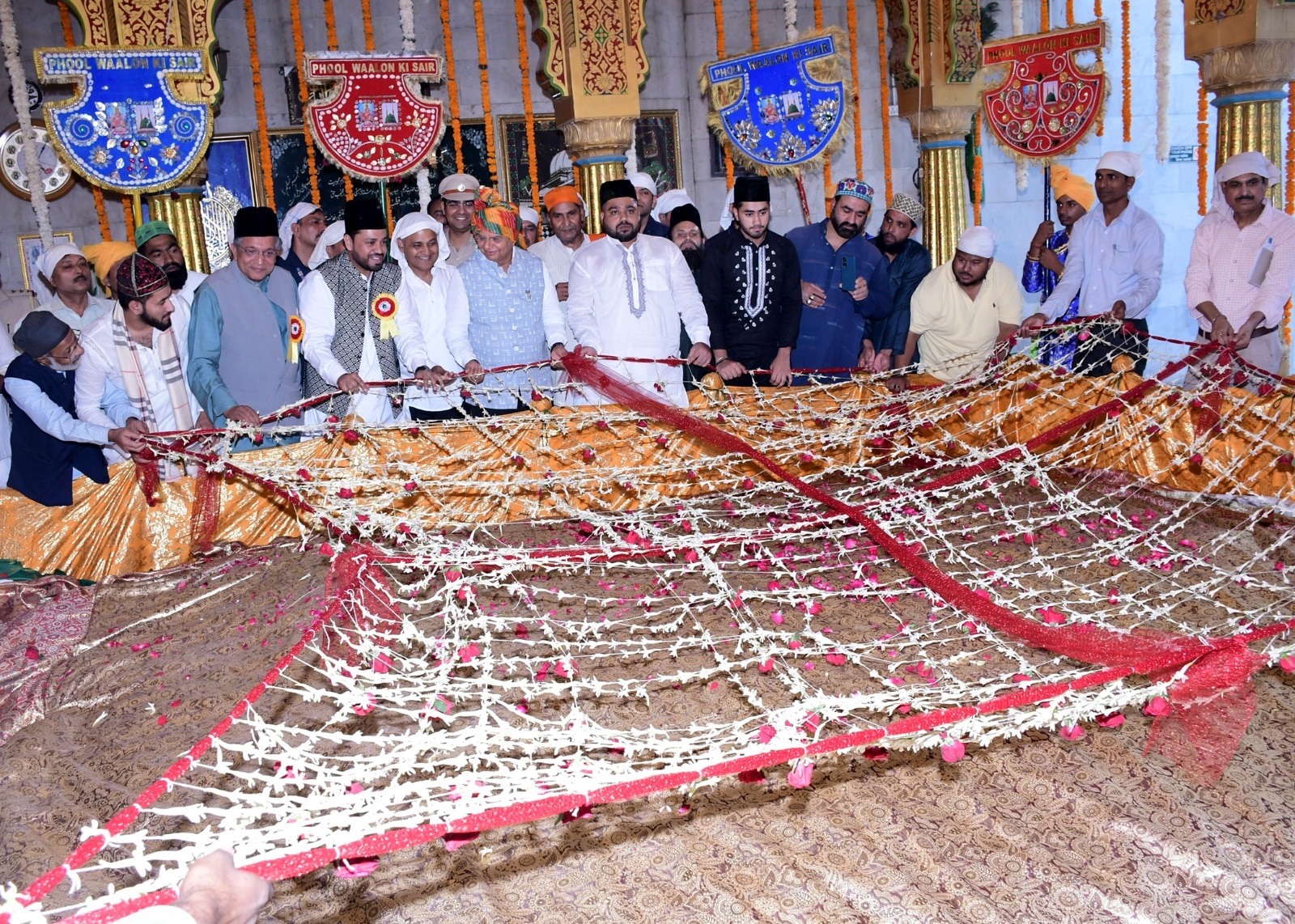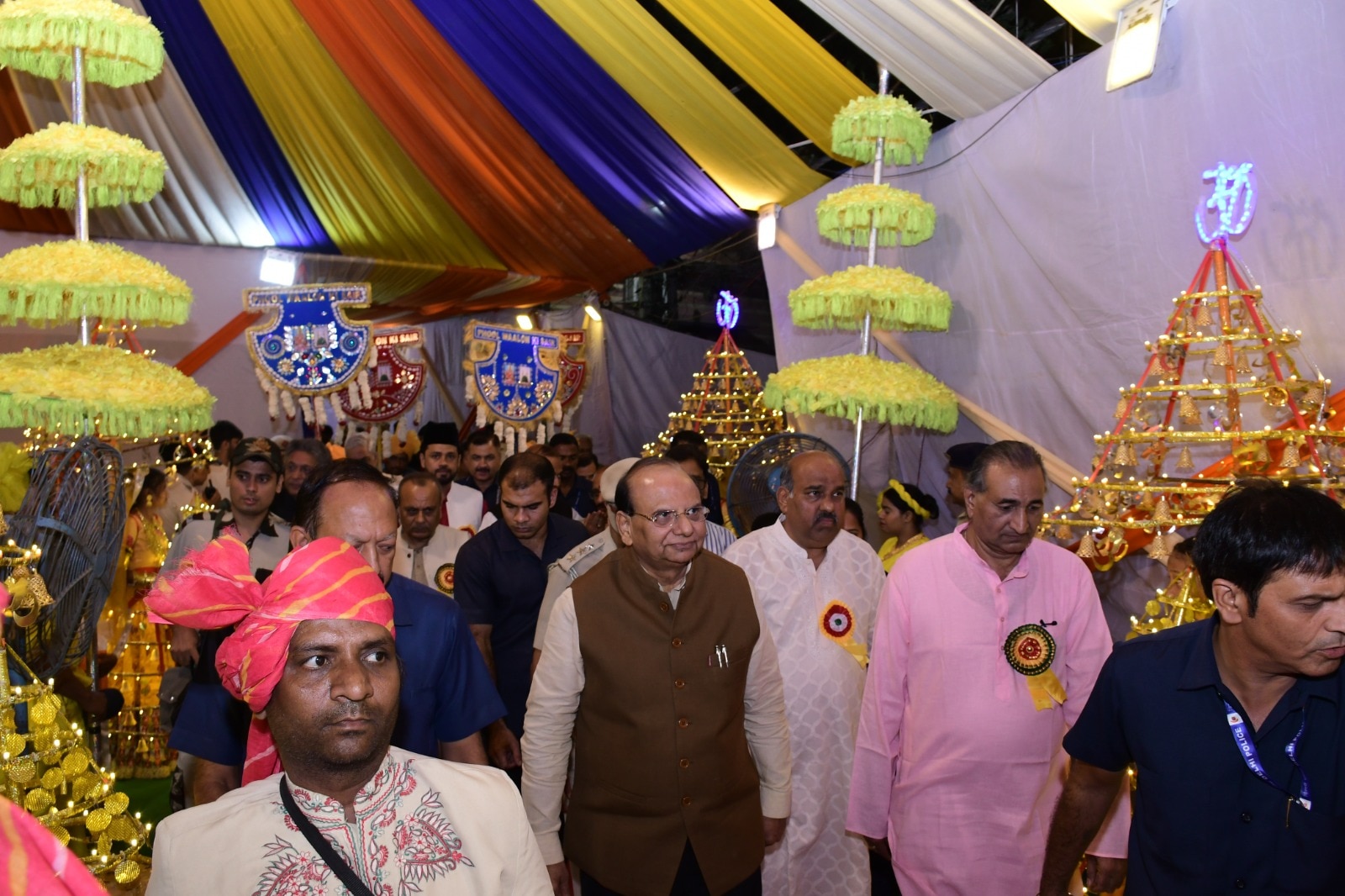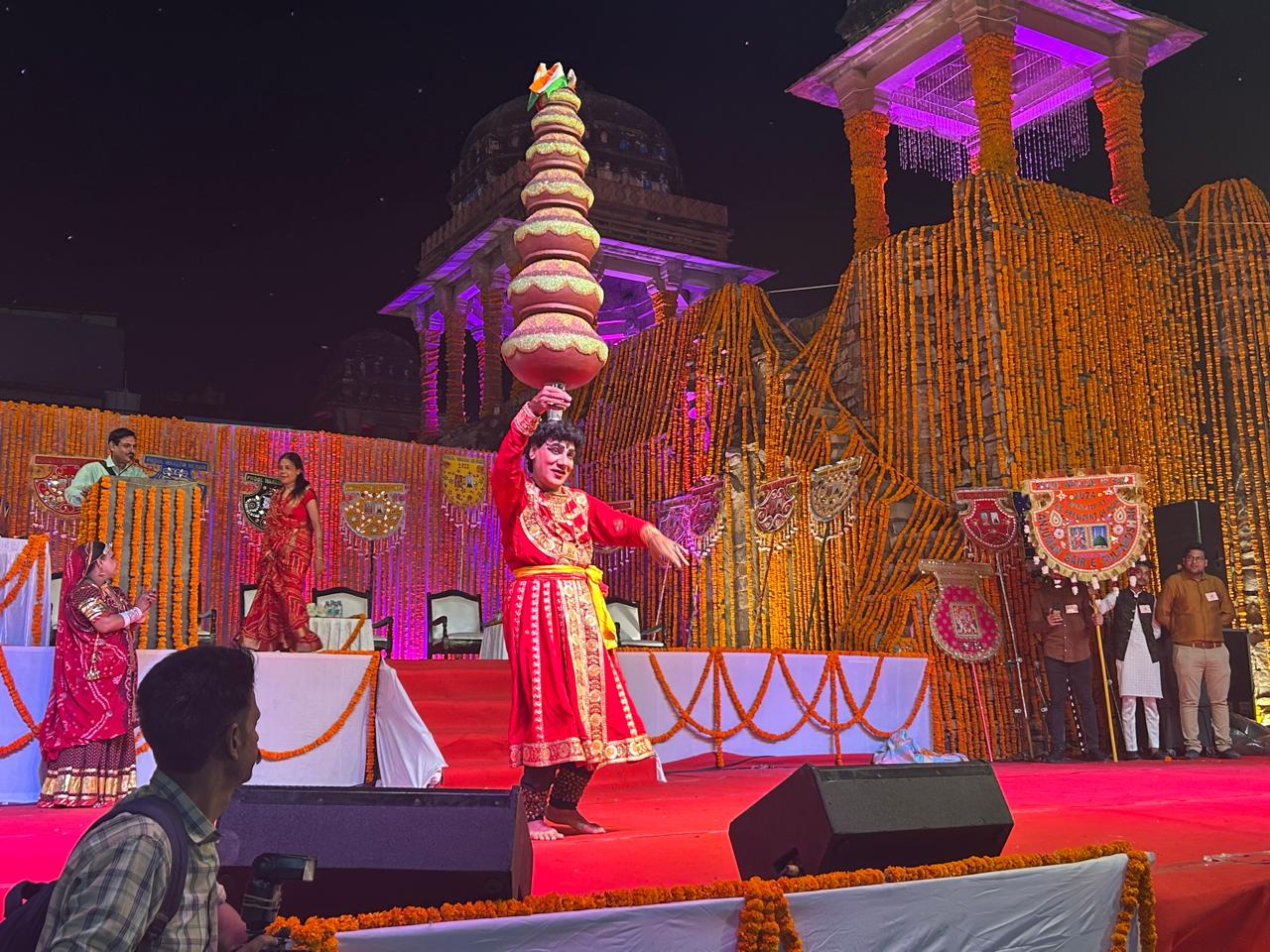We often touch the thorns gently,
People are ruthless and destroy flowers.
——Bismir Saidi
You may have seen a flower, you may have taken a walk in the garden, you may have felt its effects, you may have even picked a flower off a plant, but do you know about a Flower Walk? Bismil Saeedi Saheb said the people who pressed the flowers were absolutely heartless. But if the flower is crushed, does its effect disappear? The answer is – not at all. On the contrary, the fragrance of flowers spreads far. Likewise, there are some relationships like flowers in the air of India, their fragrance spreads far and wide, giving spiritual strength to everyone associated with them, and it is in this relationship that India and its Indianness come to life. form.
Mehrauli in the capital Delhi celebrates a special festival called ‘Phoolwalon Ki Sair’. Particularly, people from both the Hindu and Muslim communities celebrate this festival with great enthusiasm. On the one hand, flowers are offered at the shrine of the great Sufi saint Khwaja Qutubuddin Bakhtiyar Kaki (disciple of Khwaja Moinuddin Chishti), and on the other hand, a fan and a floral umbrella are offered at the Sri Yoga Maya temple. It was located in the same area during the Pandava period. Notably, both the occasions were attended by people from both the Hindu and Muslim communities. Just like Eid and Diwali are celebrated with great pomp, ‘Phoolwalon ki Sair’ is also celebrated in the same manner.
What is “Flower Row”?
‘Phoolwalon Ki Sair’ held in Mehrauli district is a centuries-old festival. It is celebrated after the monsoon and before the onset of winter. This is a festival that has been held since the Mughal era and embodies India’s social harmony, national unity and Ganga Jamuni culture. The responsibility of organizing “Phoolwalon Ki Sair” is borne by “Anjuman Sair-e-Gul Farosan”, a committee specially constituted for the purpose. Not only do people from the Hindu and Muslim communities traditionally visit temples and dargahs, this week-long celebration also includes many other activities. This year’s ‘Phoolwalon Ki Sair’ celebrations are held from October 20 to 26.
What happens during the celebration?
This year, apart from following the tradition of visiting dargahs and temples, painting competitions, wrestling and kabaddi games are also organized during the week-long celebrations. In addition to this, there are many other things.
October 20: Sarvodaya Co.Ed.Senior Qutub Mehrauli Children’s Drawing Competition
October 21: The ‘Flower Fan’ was presented to Delhi LG Vinay Saxena and Divisional Commissioner.


October 22: Sadbhavna Yatra is held at Chandni Chowk with the sounds of flowers, Shehnai and Dhol Tasha in which people from various communities participate.

October 23: Wrestling and kabaddi competitions were held at DDA Mango Orchard in Mehrauli.
October 24: Flowers were laid at the shrine of Sufi saint Khwaja Qutubuddin Bakhtiyar Kaki and Delhi Lieutenant Governor Vinay Saxena also participated in the ceremony.

October 25: The Shri Yoga Maya temple of the Pandava period houses flower fans and umbrellas. The meeting was also attended by the Lieutenant Governor.

October 26: Cultural programs and Qawwali related to many states of the country

People were mesmerized by Kaval’s words.
The ‘Foolwalon Ki Sair’ celebrations entered its final phase at the historic Mehrauli Jahaz Mahal courtyard. During this period, many cultural programs are held to showcase the country’s diversity and national unity, including folk tales and qawwali. A wonderful Qawwali event was held on the evening of October 26th and 27th. Thousands of people danced after listening to speeches by Raees Anis Sabri, Sanam Warsi and Asif Malik Sabri.
“A festival that connects people”
Delhi Chief Minister Atish participated in the final round of celebrations on the evening of October 26. Apart from Atishi, Mehrauli MLA Naresh Yadav and Malviyanagar MLA Somrath Bharti also participated in the programme. Addressing the public, Chief Minister Atish said: “The Flower Walk preserves Delhi’s centuries-old Ganga-Jamuni cultural tradition. This festival bids farewell to the path of hatred, connects people with humanity and is a day that unites Delhi. And an example of true identity.”

Excerpted from Tariq’s book: How did ‘Phoolwalon Ki Sair’ become a festival for both communities and where did this tradition begin?
The tradition of “Walk among the Flowers” is related to an incident that occurred inside the Red Fort in the 1820s. The incident took place in 1812 during the visit of Akbar Shah II. The advancing British had reached the capital and settled at the Red Fort. Akbar Shah was emperor in name only. Mr. Archibalt Seaton, a representative of the British government, was a former resident and had considerable control over the administration.
After Akbar Shah II, his eldest son Prince Mirza Abu Zafar (Bahadur Shah Zafar) was entitled to the throne, but the emperor wanted to hand the royal succession to his younger son Mirza Jahangir. Akbar Shah II’s son Mirza Jahangir was deprived of his right to succeed his brother Zafar. One day, when the British garrison went to the court to meet Akbar Shah, the question of succession was raised again, but the garrison announced that the East India Company’s decision was in favor of Zafar. Mirza Jahangir was outraged by this and fired at Seton, but missed. Thereafter, the British government sent the prince to Allahabad (Prayagraj) and kept him under house arrest in the fort.
After Jahangir’s punishment, the people of Delhi were filled with sadness. Songs were sung in every street mourning his expulsion from Delhi. Mirza Jahangir’s mother Begum Zeenat Mahal vowed that after her son’s return, she would stay in Khwaja Bakhtiar Khaki Bakhtiar Kaki)’s grave was laid with flowers and masali. After the British relented, Mirza Jahangir was sent back to Delhi, during which time the prince was given a grand welcome. After Jahangir’s return, Begum fulfilled her vow. To commemorate the event, Hindus and Muslims in Mehrauli celebrated the ‘Phoolwalon Ki Sair’ festival together today. This festival is celebrated every year after Jahangir’s return. Until 1856, Mughal Emperor Bahadur Shah Zafar presided over the festival.
The British stopped the festival
In 1857, the British authorities stopped allowing the celebration of this festival, but the people of Delhi revived the tradition and it was stopped again in 1947. After independence, around 1960-61, Chandni Chowk businessman and landowner Yogeshwar Dayal revived the festival under the patronage of India’s first Prime Minister Jawaharlal Nehru. He established the registered society Anjuman-Sair-e-Gul Faroshan in 1961 and guided the participation of various states in India in the flower walk. After Dayal’s death in 2006, the association members elected his daughter Usha Dayal Kumar as general secretary and the festival is now organized under her leadership.
“Visiting flower farmers is our culture…”
Anjuman Sair-e-Ghul Faroshan general secretary Usha Dayal Kumar told aajtak.in: “Phoolwalon ki Sair is a national unity program as it is a festival celebrated by both Hindus and Muslims. While going to Yogmaya temple, Muslims In front, the Hindus are in front of the Dargah. There is no discrimination of any kind here. We all sit together and eat together. The people of our two communities have become relatives now. People from Muslim families call me uncle.”
Usha Kumar says it’s not just a feature, it’s our culture. Previously it lasted only one day but now we celebrate it for seven days.
“There is nothing greater than peace and brotherhood in India…”
Anjuman Sair-e-Ghul Faroshan Vice President Vinod Sharma said, “Our aim is to maintain peace and brotherhood in India. There is a lot of brotherhood in Mehrauli region. There used to be a Gilani in the Dargah and his mother regarded our father as Our brothers. On the occasion of Rakshabandhan, the people of the community unite Rakhi and we will strive to carry this torch forward.”
Vinod Sharma further said that after laying flowers at the Yoga Maya Temple, we went to the shrine of Hazrat Nizamuddin and visited the tomb of Aamir Khusro and before reaching there, the Muslim community The people prepared breakfast for us. There is nothing greater than peace, tranquility and brotherhood in India. We pray to God that He will live forever.
One important thing that seems to be missing in the pomp and show of ‘Phoolwalon Ki Sair’ festival is that no one remembers the reason why this festival started. No one visited the grave of Mirza Jahangir.
Questions about “Political Gossip”
Delhi historian, filmmaker and heritage walker Sohail Hashmi said: “The Phoolwalon Ki Sair festival is full of energy and it is an amazing fair. People who run the city and distribute newspapers are involved Among them. Thousands of people, including vegetables, participate in it. “Traders and rickshaw pullers participate in this festival as it started after Shahzad’s release and then it became a festival of amalgamation of ethnic groups from many states. “
Sohail Hashmi said there is a need to celebrate the festival of ‘Phool Walon Ki Sair’ but one thing bothers him. He said, “My question is, this festival is related to Yogmaya Temple and Bakhtiyar Kaki Tomb, it is inclusive but now why do people go to LG and CM places to play Shehnai? Now this festival has been taken over by bureaucrats, then the people’s Where is the positivity left? Why are you going to LG to play clarinet? The Lieutenant Governor and Minister may come during the program, but what is the need to go to their house to play Shehnai? The program should not have political overtones.
Suhail Hashmi raised the question: “Can the people of this country do anything without involving the bureaucracy and the government? The people should also have some regency. We have democracy in the country. The plan has been Government support.” Done, but Shehnai should not be played at LG’s house. “
Awarded by the Government of India
According to the organizers, Anjuman-Sair-e-Gul Faroshan, the organizing committee of ‘Phool Walon Ki Sair’, has been awarded the National Community Harmony Award by the Government of India. The award was conferred to the committee by former President of India Pratibha Patil on August 12, 2009.








